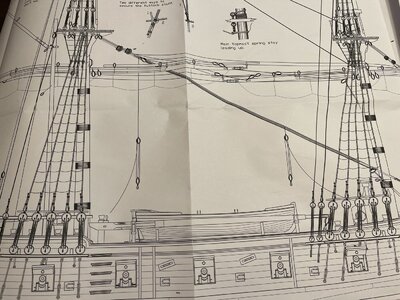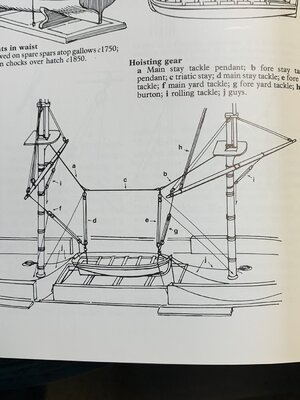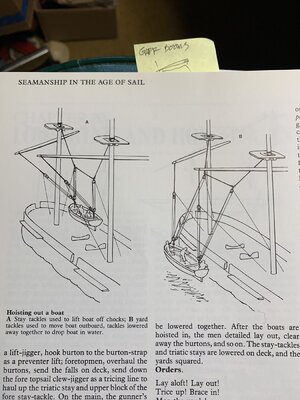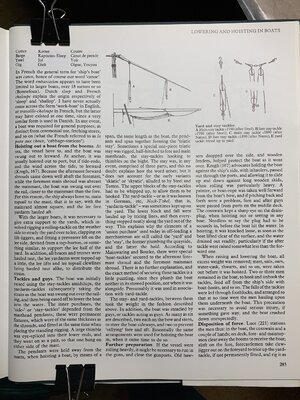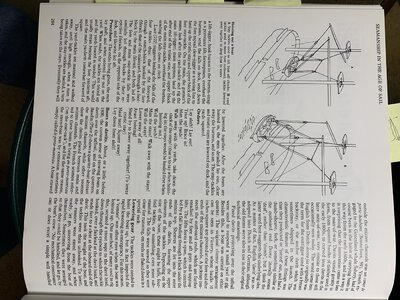Can anyone tell me what the rigging outlined in red id, and what it is for? It doesn't look right to me - the working line seems to start on the middle of the fixed cable between the masts, go through a block attached to the gunwale, then miraculously split in two to belays on the racks either side (84 & 85). Is there meant to be a block on both gunwales? Is its purpose to tension the cable between the masts? If I can understand what it's for, it'll be easier to work out how to rig it.
Thanks and Merry Christmas / Happy Holidays to all.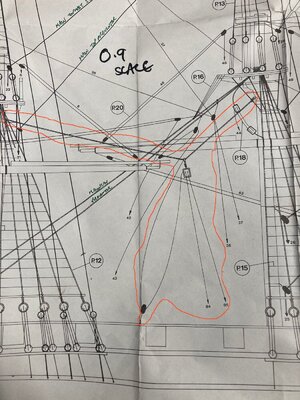
Thanks and Merry Christmas / Happy Holidays to all.







